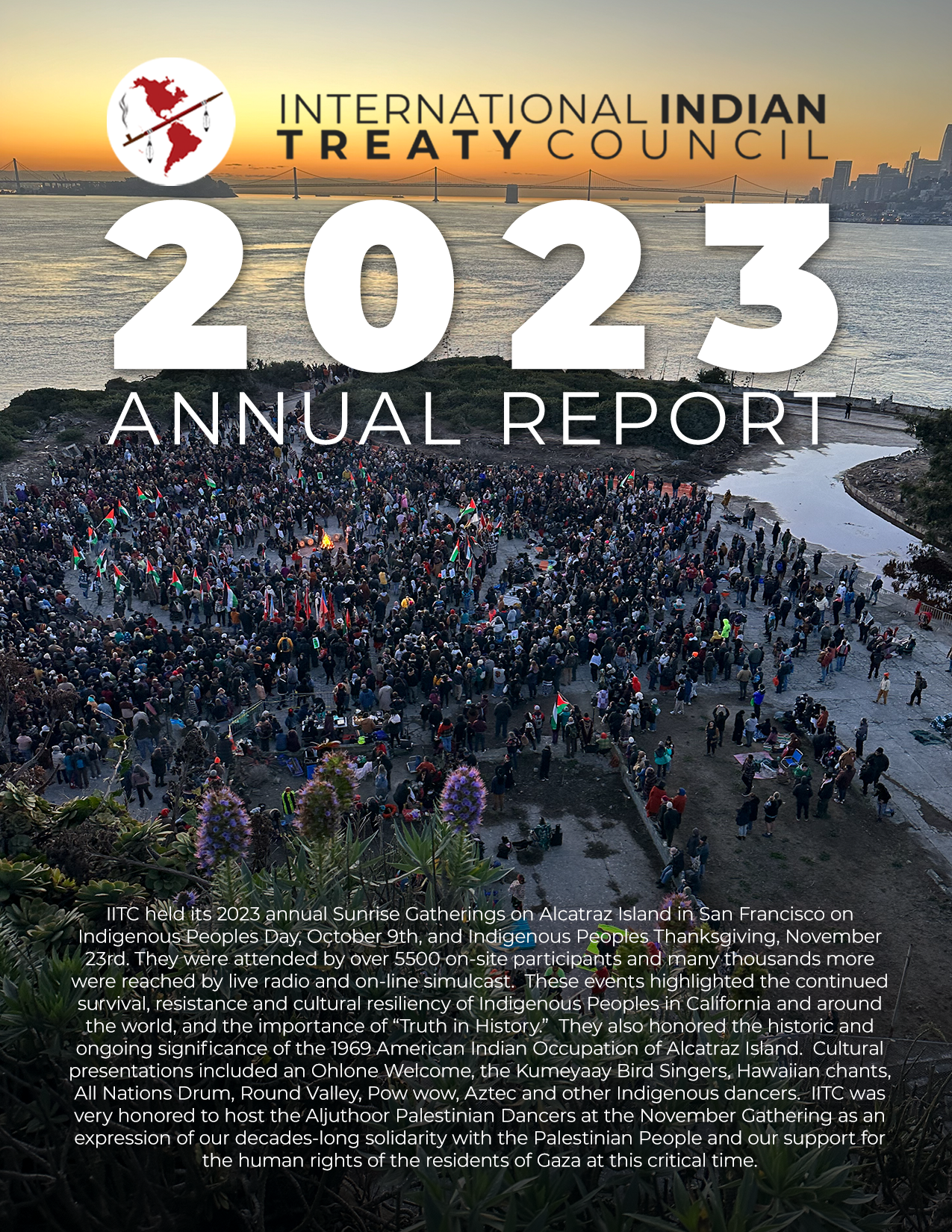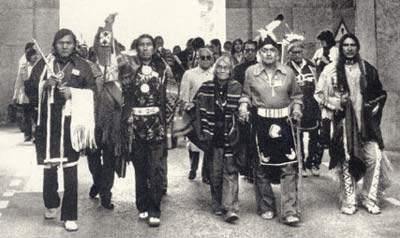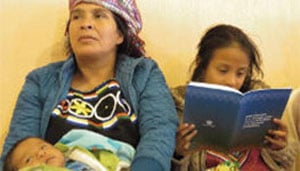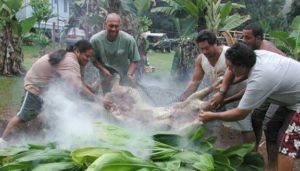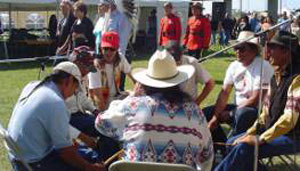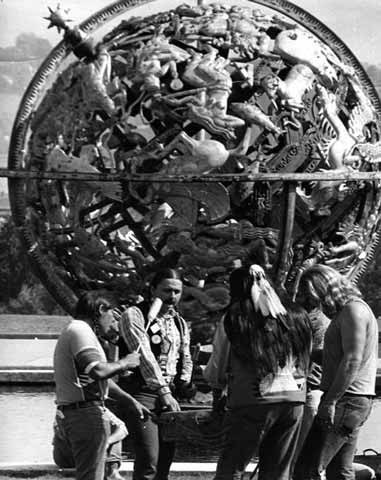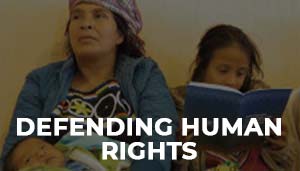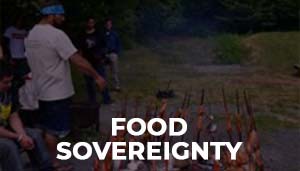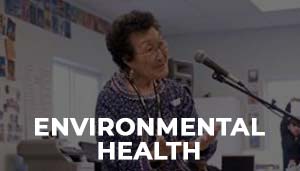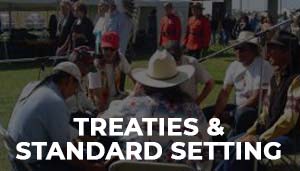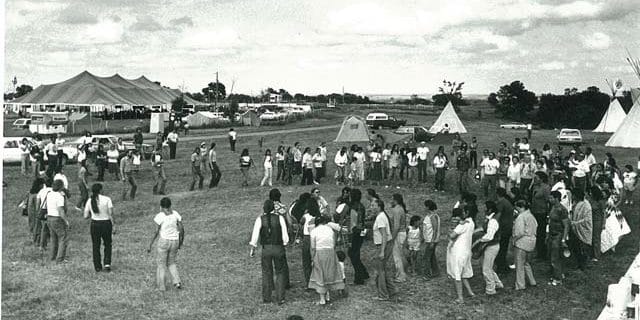International Indian Treaty Council (IITC) Provisional Position regarding plans for the creation of “protected” and “conservation” areas within the Global Biodiversity Framework
Updated 6 September 2021
- Indigenous Peoples have the right to the lands, territories and resources which they have traditionally owned, occupied or otherwise used or acquired.
- Indigenous Peoples have the right to own, use, develop and control the lands, territories and resources that they possess by reason of traditional ownership or other traditional occupation or use.
- States shall give legal recognition and protection to these lands, territories and resources. Such recognition shall be conducted with the due respect to the customs, traditions and land tenure systems of the IP concerned.
— Article 26, United Nations Declaration on the Rights of Indigenous Peoples
- Indigenous Peoples were not included in the development of the “30 by 30” policy, aka the “Leaders’ Pledge of Nature”, currently endorsed by Heads of State and Government from 88 countries from all regions. It was developed and endorsed without the participation and the Free Prior and Informed Consent (FPIC) of the Indigenous Peoples who will be impacted.
- IITC opposes the inclusion of ANY Indigenous lands, as defined in Article 26 of the UN Declaration on the Rights of Indigenous Peoples, in this 30%. These must instead be designated from other wilderness lands and waters where tenure or ownership is
- not disputed or claimed by Indigenous Peoples
- Based on the right to self-determination affirmed in both Article 3 of the UN Declaration on the Rights of Indigenous Peoples and Article 1 in common in the Human Rights Conventions, Indigenous Peoples have the right to decide for themselves if any of their traditionally owned, occupied, used or otherwise acquired lands or resources will be designated as protected areas; free of extractive industries, timber and/or agribusiness.
- Such Indigenous Peoples’ protected areas will be accompanied by the full and unqualified legal recognition of their land tenure and title, as affirmed in Article 26 paragraph 3 and Article 37 of the UN Declaration on the Rights of Indigenous Peoples.
- The protected areas established within Indigenous Peoples lands will be administered by the Indigenous Peoples themselves in accordance with their own traditions, laws and customs, with protections in place to safeguard traditional livelihoods, food systems, cultural and ceremonial access and practices, and other sustainable uses as designated by the Indigenous Peoples in question.
- These protected areas will be formally and legally recognized by both states and relevant UN bodies and processes on an equal basis as other protected areas.
- Adequate and equitable funding for the administration and maintenance of these Indigenous Protected Areas will be provided to the relevant Indigenous Peoples by the 30 by 30 program, taking into account the commitments affirmed in Article 41 of the UN Declaration.
- These rights and principles will also apply in regard to other UN processes as well as national projects in which Indigenous Peoples’ lands, territories and/or resources are being considered, for example, for the establishment of cultural heritage sites (i.e. by UNESCO), forest carbon offsets projects (under Article 6 of the UNFCCC “Paris Rulebook) or other such programs.
- Therefore, prior to the adoption and implementation of the 30×30 and all related policies and programs on the national and international levels, IITC calls for the inclusion of language to safeguard the internationally-recognized minimum standard for the rights of Indigenous Peoples as follows: “Nothing in this policy can be construed as diminishing or extinguishing the rights of Indigenous Peoples as affirmed in the United Nations Declaration on the Right of Indigenous Peoples.”
Compartir esta publicación
IITC Provisional Position on protected and “conservation” areas
International Indian Treaty Council (IITC) Provisional Position regarding plans for the creation of “protected” and “conservation” areas within the Global Biodiversity Framework
Updated 6 September 2021
- Indigenous Peoples have the right to the lands, territories and resources which they have traditionally owned, occupied or otherwise used or acquired.
- Indigenous Peoples have the right to own, use, develop and control the lands, territories and resources that they possess by reason of traditional ownership or other traditional occupation or use.
- States shall give legal recognition and protection to these lands, territories and resources. Such recognition shall be conducted with the due respect to the customs, traditions and land tenure systems of the IP concerned.
— Article 26, United Nations Declaration on the Rights of Indigenous Peoples
- Indigenous Peoples were not included in the development of the “30 by 30” policy, aka the “Leaders’ Pledge of Nature”, currently endorsed by Heads of State and Government from 88 countries from all regions. It was developed and endorsed without the participation and the Free Prior and Informed Consent (FPIC) of the Indigenous Peoples who will be impacted.
- IITC opposes the inclusion of ANY Indigenous lands, as defined in Article 26 of the UN Declaration on the Rights of Indigenous Peoples, in this 30%. These must instead be designated from other wilderness lands and waters where tenure or ownership is
- not disputed or claimed by Indigenous Peoples
- Based on the right to self-determination affirmed in both Article 3 of the UN Declaration on the Rights of Indigenous Peoples and Article 1 in common in the Human Rights Conventions, Indigenous Peoples have the right to decide for themselves if any of their traditionally owned, occupied, used or otherwise acquired lands or resources will be designated as protected areas; free of extractive industries, timber and/or agribusiness.
- Such Indigenous Peoples’ protected areas will be accompanied by the full and unqualified legal recognition of their land tenure and title, as affirmed in Article 26 paragraph 3 and Article 37 of the UN Declaration on the Rights of Indigenous Peoples.
- The protected areas established within Indigenous Peoples lands will be administered by the Indigenous Peoples themselves in accordance with their own traditions, laws and customs, with protections in place to safeguard traditional livelihoods, food systems, cultural and ceremonial access and practices, and other sustainable uses as designated by the Indigenous Peoples in question.
- These protected areas will be formally and legally recognized by both states and relevant UN bodies and processes on an equal basis as other protected areas.
- Adequate and equitable funding for the administration and maintenance of these Indigenous Protected Areas will be provided to the relevant Indigenous Peoples by the 30 by 30 program, taking into account the commitments affirmed in Article 41 of the UN Declaration.
- These rights and principles will also apply in regard to other UN processes as well as national projects in which Indigenous Peoples’ lands, territories and/or resources are being considered, for example, for the establishment of cultural heritage sites (i.e. by UNESCO), forest carbon offsets projects (under Article 6 of the UNFCCC “Paris Rulebook) or other such programs.
- Therefore, prior to the adoption and implementation of the 30×30 and all related policies and programs on the national and international levels, IITC calls for the inclusion of language to safeguard the internationally-recognized minimum standard for the rights of Indigenous Peoples as follows: “Nothing in this policy can be construed as diminishing or extinguishing the rights of Indigenous Peoples as affirmed in the United Nations Declaration on the Right of Indigenous Peoples.”
